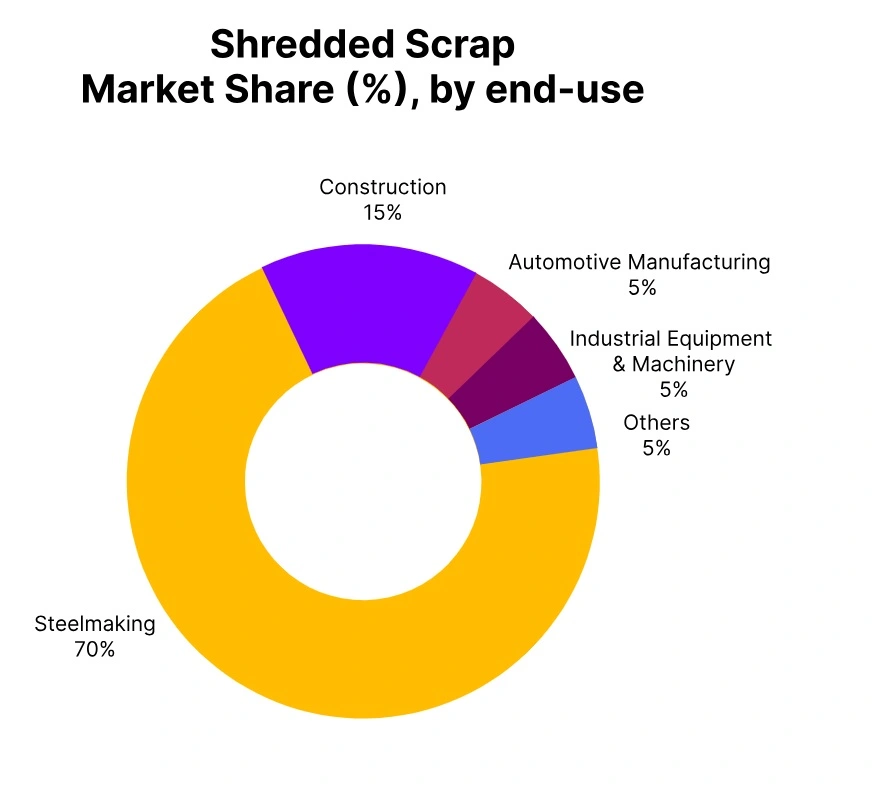Price-Watch’s most active coverage of Shredded Scrap price assessment:
- E40 FD Taranto, Italy
- Del Alabama, USA
- E40 EX Aviles, Spain
- E40 FD Hamburg, Germany
Shredded Scrap Price Trend Q3 2025
In Q3 2025, global shredded scrap prices showed a negative trend driven by weak steel demand, excess supply, and subdued buying from key markets like Turkey and the EU. Economic uncertainty and softer construction and manufacturing activity led mills to reduce scrap intake, while inventory buildup pressured sellers to offer discounts.
Alternative raw materials such as DRI and HBI also undercut scrap demand in some regions. As a result, benchmark scrap prices like Turkey’s HMS 1&2 (80/20) fell, with similar declines seen in the U.S. and EU, reflecting broad downward pressure across the market.
USA
Shredded Scrap Domestically Traded price, DEL Alabama, USA, Grade- E40.
According to Price-Watch, In Q3 2025, shredded scrap prices in Germany have declined by 2.74% compared to Q2, driven by weaker demand from steel mills amid elevated energy costs and a seasonal slowdown in industrial activity. Reduced exports and heightened global competition have added further pressure, shaping a cautious market outlook.
Overall, the shredded scrap market has shown a modest downtrend influenced by both domestic and international factors, with uncertainty persisting into Q4. In September 2025, prices in Germany have fallen by 1.98%, reflecting reduced demand from the manufacturing sector and increased scrap supply, alongside broader global economic uncertainty and shifts in raw material sourcing.
Germany
Shredded Scrap Domestically Traded price, FD Hamburg, Germany, Grade- E40.
In Q3 2025, shredded scrap price trend in Germany have declined by 2.74% compared to Q2, driven by weaker demand from steel mills amid elevated energy costs and a seasonal slowdown in industrial activity. Reduced exports and heightened global competition have added further pressure, shaping a cautious market outlook.
Overall, the shredded scrap market has shown a modest downtrend influenced by both domestic and international factors, with uncertainty persisting into Q4. In September 2025, Shredded Scrap prices in Germany have fallen by 1.98%, reflecting reduced demand from the manufacturing sector and increased scrap supply, alongside broader global economic uncertainty and shifts in raw material sourcing.
Italy
Shredded Scrap Domestically Traded price, FD Taranto, Italy, Grade- E40.
During Q3 2025, shredded scrap price trend in Italy decreased by 3.92% compared to Q2 due to an overall downturn in demand from steel mills driven by seasonal slowdowns and lower production activity during summer holidays. Nonetheless, demand for shredded scrap in Q3 has been considered relatively tight, and the decline measured in shredded scrap prices has primarily from softening demand, with lower mills bids in the domestic market, and softening export market support.
Although this decrease is negligible, it is a reversal of sentiment following the modest gains in prices during Q2 and a sign of mills addressing cost control in a market with weak steel production levels and concerns over the uncertainty of their order books for future steel production.
In comparison, the shredded scrap prices in Italy decreased by 1.91% in September, in part due to steel mills having lesser demand for shredded scrap with construction activity slowing with the seasonal shift, and because domestic availability of scrap improved.
Spain
Shredded Scrap Domestically Traded price, EX Aviles, Spain, Grade- E40.
In the third quarter of 2025, the shredded scrap price trend in Spain reflected a decline of 3.13% compared to the preceding quarter indicating a softening market with lower demand from steel production, improving scrap availability, and stable import competition. Prices had stabilized in the second quarter of 2025 but declined in the third quarter indicating some measure of cautious purchasing and a more even marketplace and supply chain for scrap.
The decline in the price of shredded scrap also reflects the seasonal effect and macro pressures weighing on the marketplace, though participants seem to be on alert for shifting demand patterns or disruptions to supply which could reverse the trend.
In September 2025, the 2.0% decline in shredded scrap prices in Spain has been a reflection of lower demand from the steel manufacturing sector resulting from the slowing construction sector. Also, an improvement in availability of scrap due to increased levels of collection contributed to the downward pressure of pricing.


